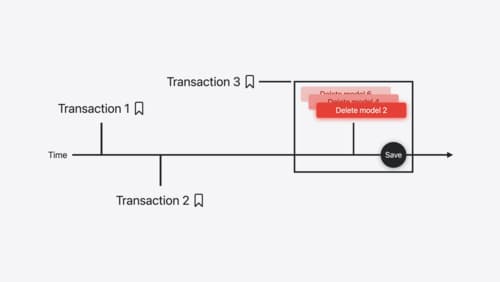how to do swiftdata migration
Asked on 2024-07-28
1 search
To perform a SwiftData migration, you can follow the guidance provided in the WWDC sessions. Here are some key points and resources to help you:
-
Introduction to SwiftData:
- SwiftData is a framework that makes it easy to build your app's model layer and persist it across launches of your app. It provides persistence, modeling, and migration of your schema, among other features.
- What’s new in SwiftData session provides a comprehensive overview of the framework.
-
Schema Customization and Migration:
- You can define your schema with the model macro and further refine it using attributes and relationships.
- The framework supports custom data stores, allowing you to use different backends like SQLite, remote web services, or JSON files.
- Platforms State of the Union session discusses the expanded capabilities of SwiftData, including custom data stores and history tracking.
-
History Tracking:
- SwiftData provides access to the history of changes in a datastore, which is useful for tracking local changes that need to be synced to a remote web service.
- The session Track model changes with SwiftData history covers how to use SwiftData history for migration and tracking changes.
-
Custom Data Stores:
- You can create custom data stores by implementing the datastore protocol, which allows you to support any persistence backend.
- The session Create a custom data store with SwiftData provides an example of how to implement a custom store.
-
Migration Strategy:
- For best practices on migration, you can follow a hands-on tutorial in the session Migrate your app to Swift 6. This session outlines a step-by-step process for migrating your app, including enabling concurrency checking and resolving warnings.
By following these resources and sessions, you should be able to effectively manage SwiftData migration in your app. If you need more specific details or examples, you can refer to the individual sessions mentioned above.

Platforms State of the Union
Discover the newest advancements on Apple platforms.

Track model changes with SwiftData history
Reveal the history of your model’s changes with SwiftData! Use the history API to understand when data store changes occurred, and learn how to use this information to build features like remote server sync and out-of-process change handing in your app. We’ll also cover how you can build support for the history API into a custom data store.

Migrate your app to Swift 6
Experience Swift 6 migration in action as we update an existing sample app. Learn how to migrate incrementally, module by module, and how the compiler helps you identify code that’s at risk of data races. Discover different techniques for ensuring clear isolation boundaries and eliminating concurrent access to shared mutable state.
